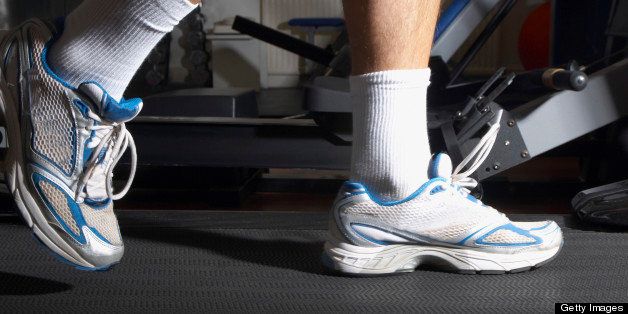
It's May! In most of the northern hemisphere, May is a beautiful month. For many of us, the warmer days let us bring our winter-worn feet out of hiding. It's a good time to put our feet up, wiggle our toes, and think about the role of foot health in enabling us to stay strong, active and independent.
Coincidentally, May also brings awareness of three important medical conditions that can involve the feet and are associated with old age -- arthritis (National Arthritis Awareness Month), osteoporosis (National Osteoporosis Awareness Month), and neuropathy, which often stems from diabetes (National Neuropathy Awareness Week, May 13-17).
Each of these conditions can affect daily life, from the care that must be taken to prevent falls to the need for better kitchen tools to difficulty sensing what's on the floor.
Other than being more common in older people, they share something else: the feet.
The feet? Say what?
Ask any podiatrist (or where I live, chiropodist). Feet are literally at the base of so much misery. Yet, feet that function enable us to move freely and safely through our days.
Feet that hurt, don't work well or can't sense their environment leave us vulnerable to falls and limit our activity. Pain is distracting. We might limp. Our balance may be off. We might not sense something we could trip on.
Yes, happy feet make happy people. So, let's look at how we can better use, protect and defend our feet in each of the age-related conditions highlighted in May.
Arthritis: When joints wear out from overuse, carrying too much weight, or the simple fact that they were not designed to last forever, we tend to stop moving. Arthritis in the big-toe joint can make walking painful, let alone other forms of pleasant weight-bearing exercise such as dancing and racket sports. Arthritis in the knees and hips can affect our gait, throwing things off balance and putting more pressure where it doesn't belong.
Which is the reason that I, your rheumatologist and your physical therapist are going to tell you that you still gotta move. Motion is lotion. Movement helps oil the joints, rendering any remaining cartilage softer and more pliable and helping to warm and spread the synovial fluid that lubricates the joints. Movement also helps preserve a fuller range of motion. Walking, line dancing, Nordic-pole walking, whatever it takes, will help keep your feet and ankles strong, flexible and healthy, prepared to do their job.
So, even if your knees hurt, consult your experts about safe activities and strengthening exercises that will support your joints. And if the joints (or anything else) in your feet hurt, get professional help. You might need to wear prescription orthotics to correct your gait, provide support and reduce pressure on those joints. It might also be time to take up new sports that are less stressful where it hurts. And whatever your chosen activity, be sure to wear appropriate, correctly fitted shoes. Change your walking or running shoes every three to four hundred miles (which, if you don't measure it as obsessively as a hard-core runner, is about twice a year for moderate use). It's worth it.
Osteoporosis: With osteoporosis, or brittle bones, the risk of a fall-related fracture goes up. Thus, it becomes ever more important to help your feet keep the rest of you out of trouble. Wear securely-fastened, rubber-soled shoes and slippers at all times (if it helps, take a special shopping trip to focus on this one need). Prevent falls by getting rid of scatter and throw rugs; leveling out transitions in the floor; eliminating or tacking up lamp and appliance cords; lighting hallways, walkways, stairwells and bathrooms; and using safety treads on indoor and outdoor steps.
At the same time, attend to any physical conditions that reduce strength and flexibility in your feet and ankles, and learn simple exercises that you can do while seated. For example, scrunch up a towel barefooted, write the alphabet in the air with your toes, and rotate your feet in both directions. Standing balance exercises will help teach your feet to keep you upright.
Neuropathy: A whole range of age-related conditions, such as diabetes, are linked to nerve damage in the extremities, especially the feet. This can cause weakness, numbing, tingling and pain. Thus, foot neuropathy can also raise the risk for falls. Learn about the condition, talk to your medical support team about management and set up safeguards. Everything listed under recommendations for people with osteoporosis will apply to you (though, if your bones are stronger, your fracture risk may be lower). Explore new types of exercise. And consider footwear that gives your feet the best possible "feedback" about the environment. Obviously, this is no time for platform heels (what is?).
So, as you pack away your winter boots and get your feet ready to breathe free in sandals in the warm summer air, massage your soles, wiggle your toes and thank your tootsies for the work they do for you every day. If you help them do their job, they'll pay you back in kind.